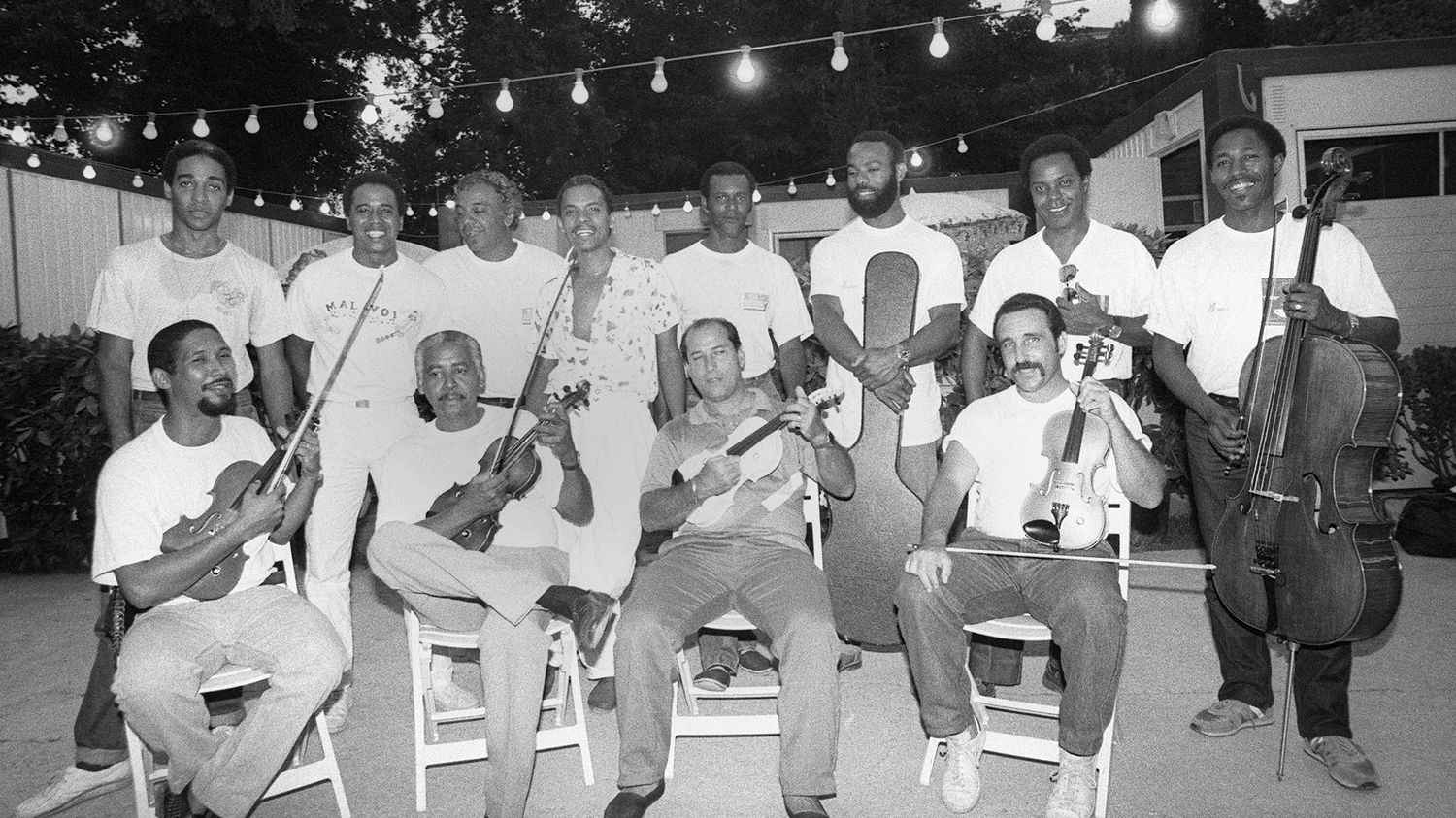“Biguine is a very open music, like all Creole genres” : in Paris, the Big in Jazz Collective and the group Malavoi will honor this musical style from the French West Indies this week. They will offer two unique shows, each in their own style. The first formation will be in concert at L‘Alhambra on Tuesday, the second at La Cigale on May 21.
“It’s a very defined genre, but one that’s very open. Once we’ve said that biguine is roughly a polka with a somewhat particular syncopation, from there, we can do a lot of things with”, explains to AFP the journalist Bertrand Dicale, author of the book Neither black nor white: history of creole music. The beguine was born in Saint-Pierre, in Martinique – then the hub of the West Indies -, from the meeting of European ballroom dance music (polka, mazurka, contredanse…) and bèlè (or bel-air), a rhythm of African origin from the countryside.
Performed in the houses of masters by those called “talented negroes” at the time, its rise was halted with the eruption of the Mount Pelée volcano in 1902, which destroyed the town of Saint-Pierre, then the economic capital of the island. Since its appearance at the beginning of the Third Republic, it may have been transformed, having given birth to other styles, it remains the mother of all music in Martinique.
The Big In Jazz Collective is a group of musicians between the ages of 25 and 50 who are supposed to represent the living forces of contemporary West Indian jazz. He will be in concert at the Alhambra in Paris on Tuesday and aims to further accentuate the close link that biguine very quickly maintained with jazz. His ambition: to take over the standards of great West Indian composers who had already opened up biguine to jazz in their time – Alain Jean-Marie, Eugène Mona, Marius Cultier, Albert Lirvat, Alexandre Stellio… – and give them a boost . “It’s a meeting between musician friends who want to promote Creole jazz. For me, jazz is freedom of expression and, through this freedom, the way to promote our cultures and our traditions”, claims Stéphane Castry, bassist and dean of the formation.
But in the maze of other influences claimed by the group – soul, groove, reggae, funk… – the beguine can sometimes give the impression of dissipating. “When I listen to the Big in Jazz Collective, the beguine, I have trouble finding it”, points out Eric Basset, director of the Aztec Musique label, which specializes in Caribbean music. “Inevitably, we are more or less far from both the definition, insofar as there is a unique and canonical definition, of biguine, and above all more or less far from habits”, note for his part Bertrand Dicale.
Malavoi – named after a variety of sugar cane -, who will play at La Cigale on May 21, is more conservative. The formation, born half a century ago and of which only one original member remains today, drummer Denis Dantin, brushes this beguine more in the direction of the hair. The versions offered by this formation, which has become an institution in Martinique, are much more silky, comfortable, soft to the ear, with symphonic accents.
To the brass instruments and the guitars privileged in the Big In Jazz Collective, Malavoi prefers the strings, recalling that at the very beginning of history, the king instrument in the living rooms of colonial residences was the violin, before being the clarinet or the trumpet. But beyond their differences, the Big In Jazz Collective and Malavoi agree on one essential point: the cadence, immutable, imprinted by the rhythm of the bèlè. Because, according to Bertrand Dicale, beguine, “before it was a genre in itself, it was a particular way of playing music“.
